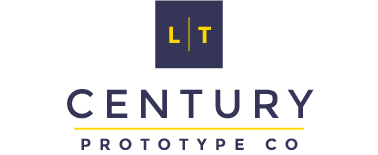Demand for quicker production, higher accuracy, and lower prices is changing manufacturing. This progress is driven by fast tooling, a novel method for making tools, molds, and dies quickly. Rapid tooling is giving companies unparalleled efficiency and flexibility by using cutting-edge technology.
Rapid tooling’s basics, uses, and strategic benefits to contemporary producers are covered in this article.
Rapid Tooling: Manufacturing Paradigm Change
Today’s dynamic manufacturing settings are unsuitable for traditional tooling techniques’ long processes, high labour, and high prices. Rapid tooling uses additive manufacturing, laser sintering, and hybrid fabrication to change this paradigm.
Rapid tooling uses digital designs and automated procedures instead of hand craftsmanship and massive setups. Manufacturers may create tools with complex geometries, quicker lead times, and high precision.
Benefits of Rapid Tooling for Modern Industries
- Manufacturing agility:
Rapid tooling enables agile production in a market-driven environment. It lets firms swiftly adjust to changing client wants and trends by reducing tool development time.
- Optimizing Costs:
Rapid tooling cuts labour and material costs. This cost-efficiency makes modern tooling more affordable for enterprises with modest production quantities or budgets.
- Workflow Simplified from Design to Production:
Manufacturers can effortlessly shift from idea to production using digital design integration. Design changes may be performed without restarting tools, saving time and money.
- Manufacturing sustainability:
Rapid tooling promotes green manufacturing by decreasing energy and material waste. This becomes more essential when businesses pursue global sustainability objectives.
Techniques for Rapid Tooling
Rapid tooling uses several methods customized to production demands.
Injection Maudling Inserts:
Rapid tooling commonly creates injection mould inserts for low-volume or prototype manufacturing. These additive or hybrid inserts allow quick, cost-effective component manufacture.
Vacuum Casting:
Vacuum casting using silicone moulds provides high-quality prototypes and small batches. Its precision and speed appeal to automobile and medical device manufacturers.
Direct Metal Tooling:
DMLS makes accurate, robust metal tools. These are popular in cars and aircraft.
Industry-wide Applications
Consumer electronics and goods:
The consumer products business relies on rapid tooling to prototype and manufacture electronics, appliances, and wearable device components.
Health and Medical Devices:
Precision and customization are essential in healthcare. Rapid tooling makes patient-specific medical tools, implants, and diagnostic gadgets possible.
Defence and aerospace:
Rapid tooling helps manufacture lightweight, high-strength aviation and defence system components in precision- and performance-critical sectors.
Automotive Innovation:
Rapid tooling creates car component prototypes for faster iterations and shorter development cycles in the automotive industry.
Strategy of Rapid Tooling in Prototyping
Rapid tooling is essential for testing, refining, and validating ideas during prototype. Manufacturers may find design issues early and save expensive changes by making functioning prototypes that closely resemble final goods.
Rapid Tooling Opportunities and Challenges
Rapid tooling has revolutionized production, but it has drawbacks.
Material limitations: Rapid tooling may be less durable than conventional processes.
Upfront Investment: Rapid tooling technologies demand large equipment and training investments.
Future Rapid Tooling Trends
Rapid tooling will improve efficiency and capacities with innovations:
AI-Driven Design Optimization: AI will automate and optimize tool designs for better performance.
IoT integration: Rapid tooling will allow real-time modifications and monitoring in smart production systems.
Advancements in materials like high-performance composites and renewable alternatives will enable quicker tooling.
Conclusion
Manufacturing tool manufacturing has changed drastically with rapid tooling. It helps industry create quicker and produce better products by giving unequalled speed, accuracy, and flexibility. Rapid tooling will drive efficient, sustainable, and competitive production as technologies improve. This transformational strategy will help companies lead in a changing industry.
Reference
*Image from https://www.istockphoto.com/

